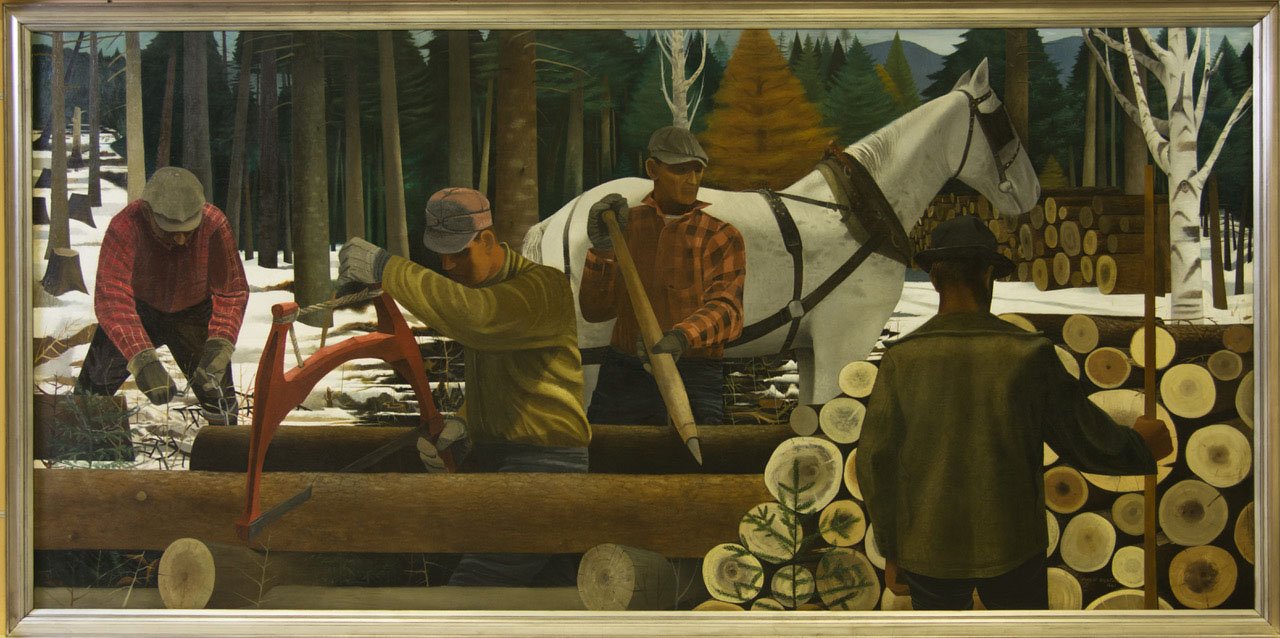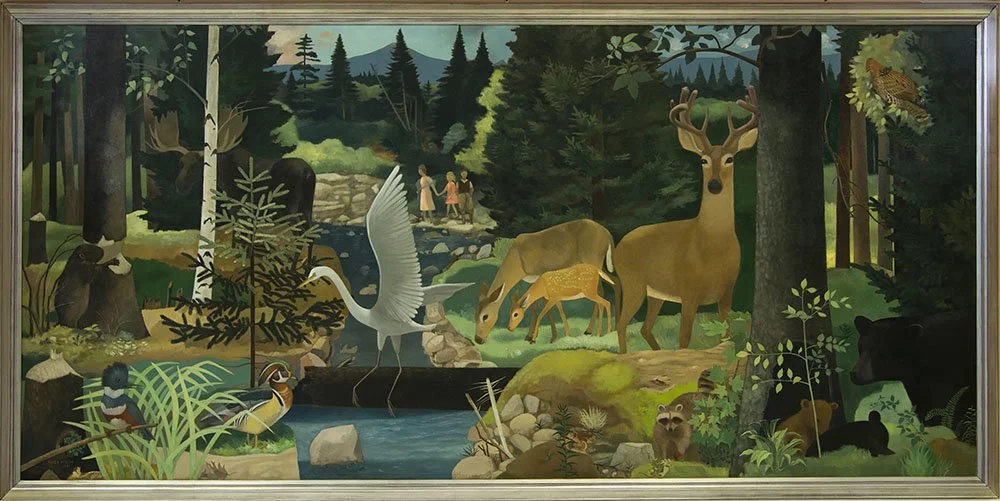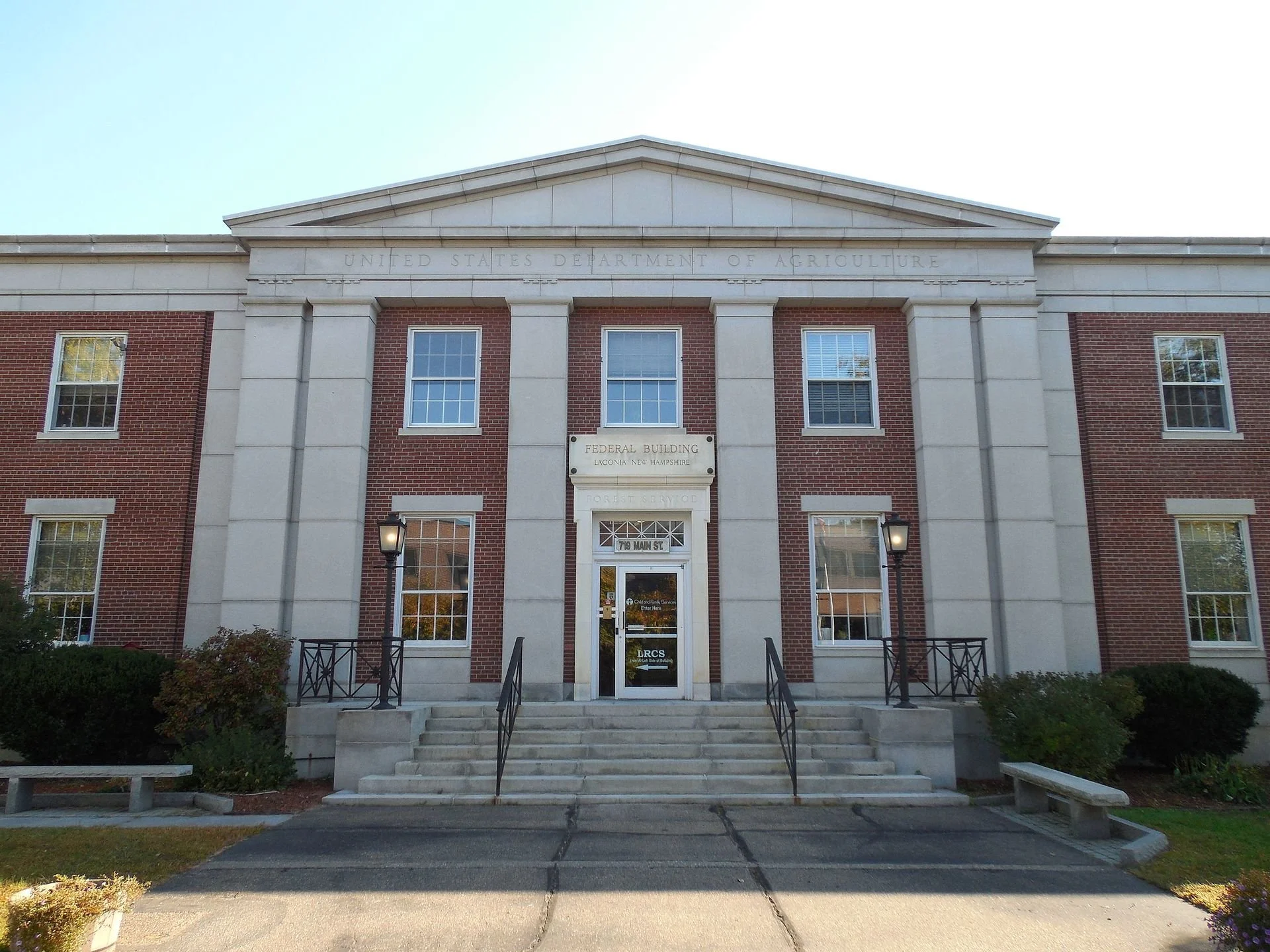Wood for paper and WPA in New Hampshire
“Pulpwood Logging” (oil on canvas, 1941), by Philip Guston (Canadian-American, 1913-1980), in the show “WPA in NH: Philip Guston and Musa McKim,’’ through Jan. 30 at the Currier Museum of Art, Manchester, N.H. Pulpwood was used to make paper — a once-large, and heavily polluting (of air and water), industry in the Granite State.
The museum explains:
“In 1941, the famed artist Philip Guston and the {American} poet/painter Musa McKim painted a pair of monumental murals for what at the time was the Federal (aka Forestry) Building in Laconia, N.H. Each measuring 14 feet, the expansive paintings depict sustainable logging and the restoration of New Hampshire forests around the White Mountains. The images were commissioned by the Works Progress Administration to carry out public projects and support artists under the New Deal.
“Although these magnificent murals are of great artistic significance, they have long been forgotten as the original building in Laconia was repurposed. The paintings have been carefully restored by the federal General Services Administration and are back in New Hampshire, where they can now be seen at the Currier Museum of Art….
“The paintings mark important points in the careers of the two artists, who were married to each other. Shortly after completing this mural, Philip Guston gave up realistic painting to focus on Abstract Expressionism; he became a leader of the New York School. Musa McKim focused her career on poetry and writing; her collection Alone with the Moon was published in 1994.”
"Wildlife in the White Mountains” (1941, oil on canvas), by Musa McKim (1908-1992)
Former Federal Building in Laconia, N.H. It now houses a local social-service agency.
Circa 1912



